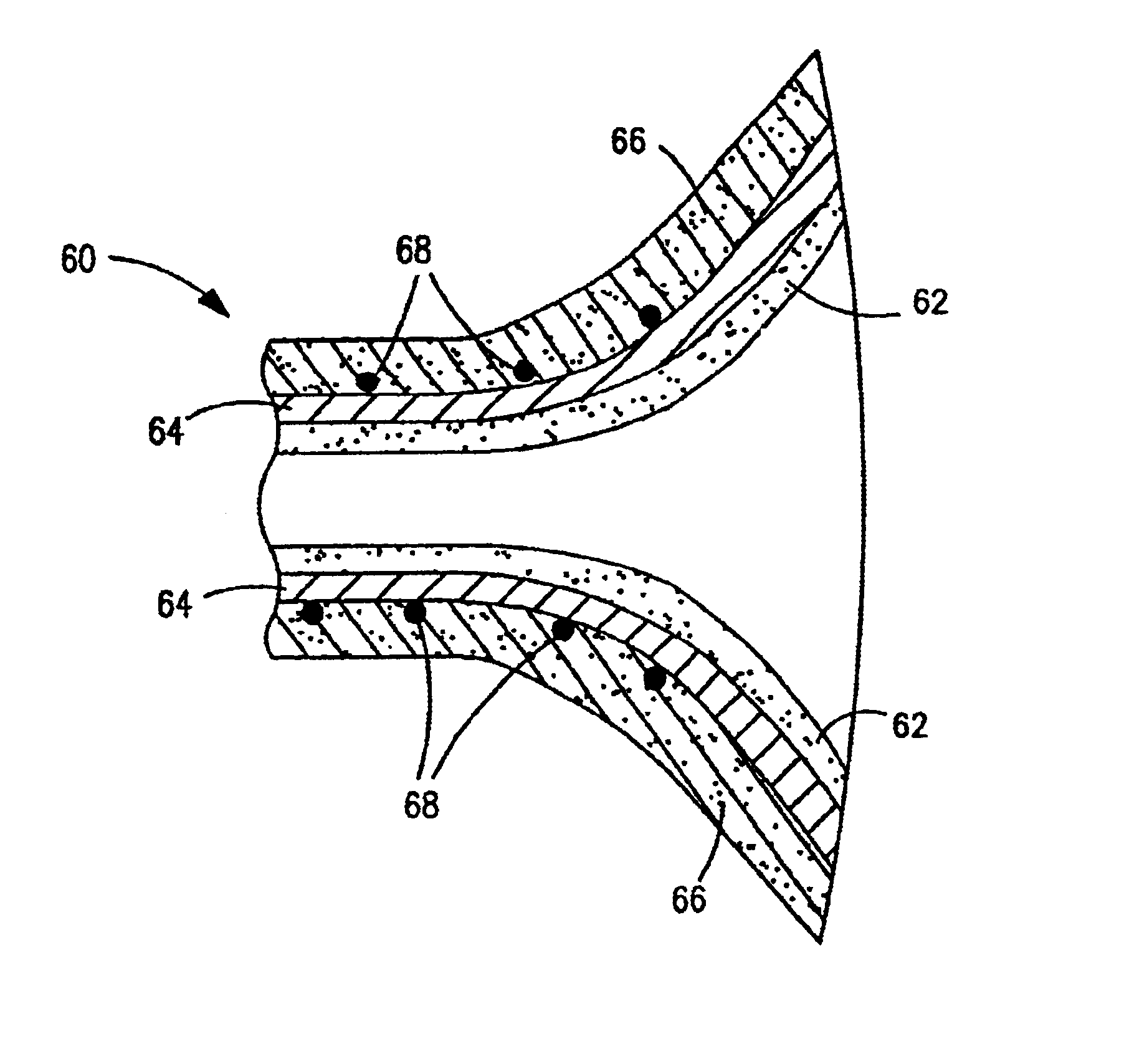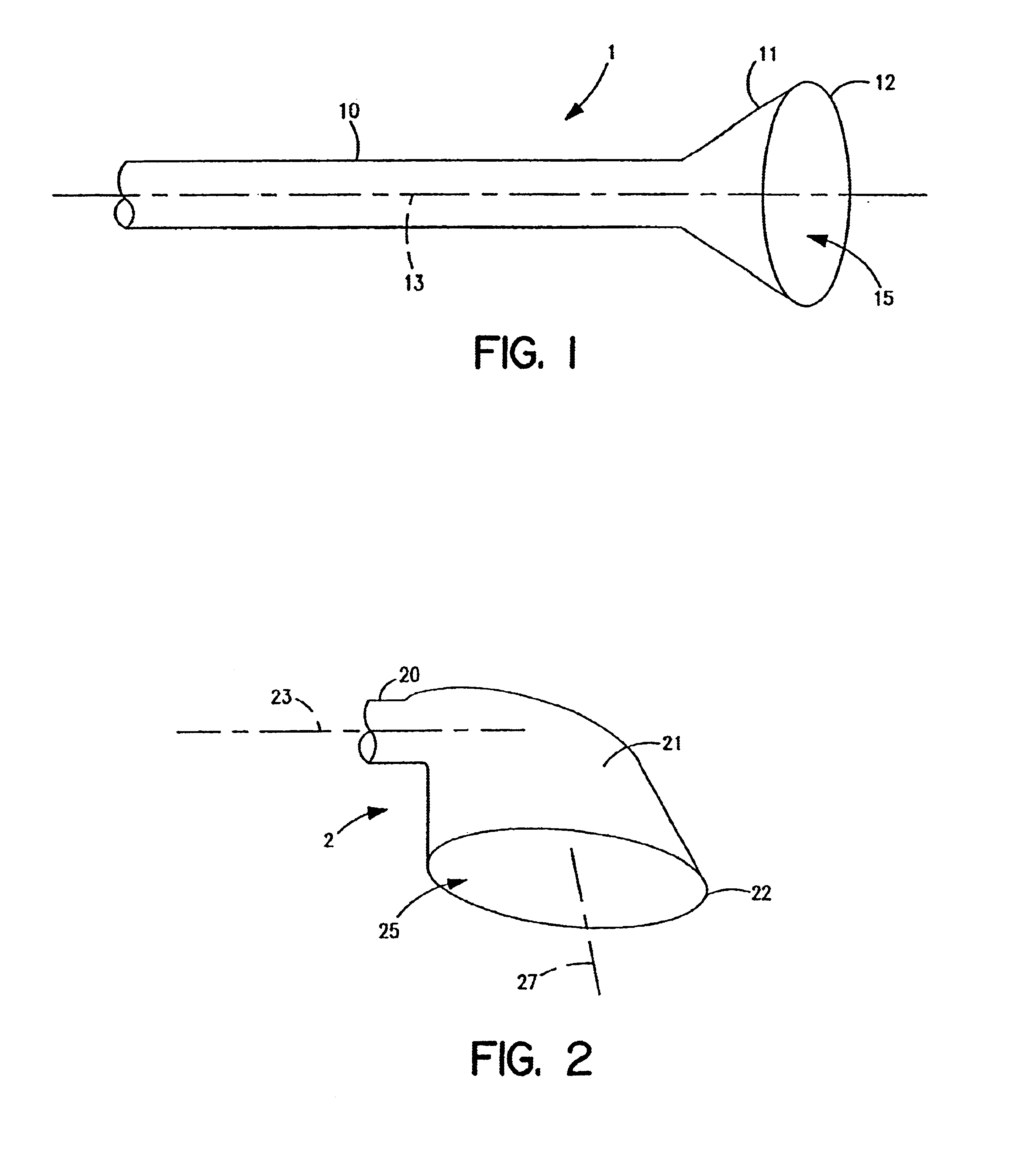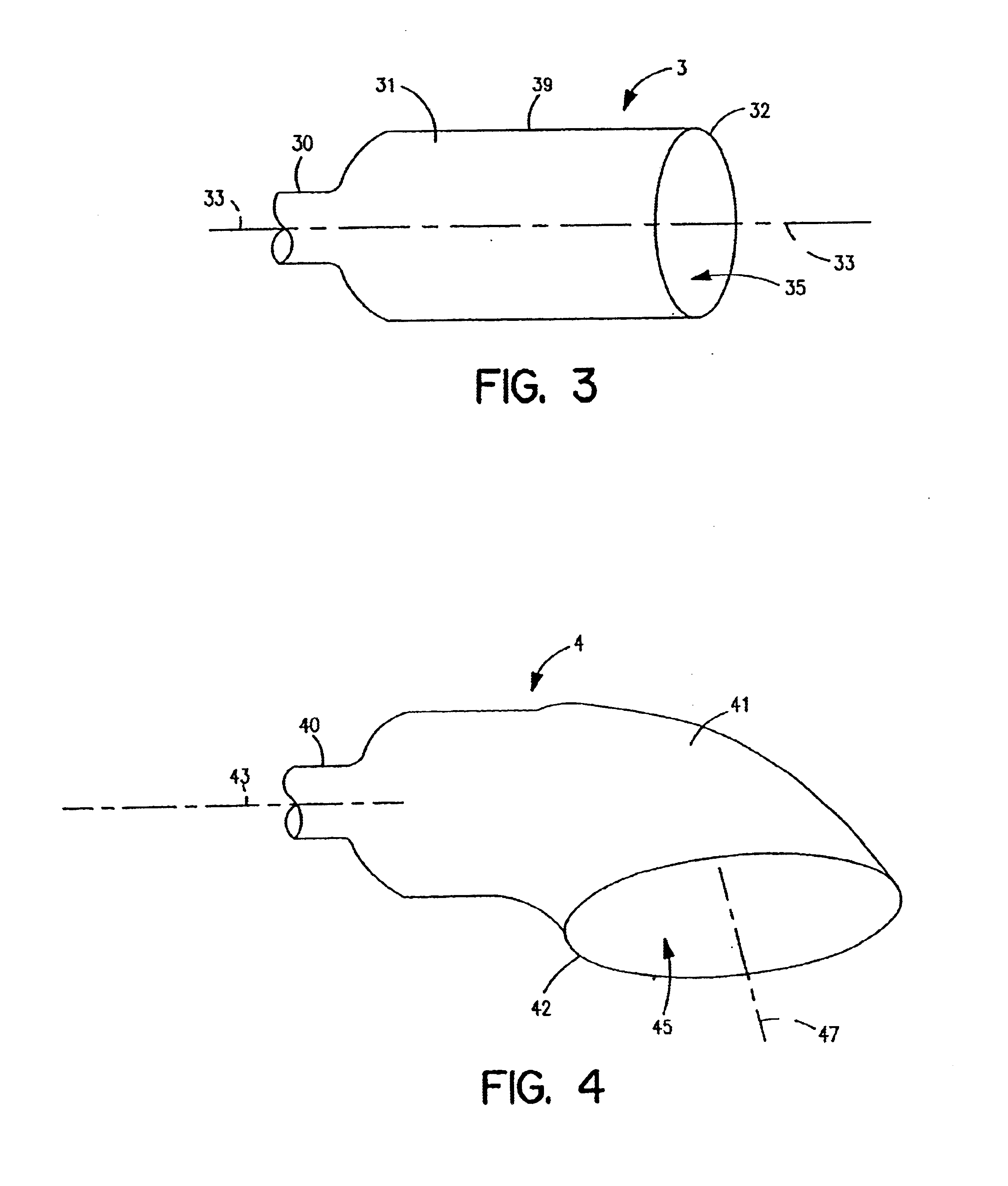Flared coronary artery bypass grafts
a technology of bypass grafts and coronary arteries, which is applied in the field ofvascular grafts, can solve the problems of reducing the radial compliance or longitudinal compliance of an artificial graft, affecting the radial compliance or longitudinal compliance of the artificial graft, and the internal diameter of the vascular graft less than about six (6) mm,
- Summary
- Abstract
- Description
- Claims
- Application Information
AI Technical Summary
Benefits of technology
Problems solved by technology
Method used
Image
Examples
Embodiment Construction
FIG. 1 depicts a graft 1 according to the invention, namely a CABG, having a flared end. A tubular portion 10 of graft 1 has one flared end, formed by a skirt 11, which is symmetrically flared to form a substantially circular opening 12. The axis of opening 12 is substantially parallel to, if not concentric with, an axis 13 of the tubular portion 10. Thus, opening 12 may be substantially concentric with tubular portion 10. Skirt 11 forms an open space 15, which is circumferentially and volumetrically larger than the space provided in a corresponding section of the tubular portion 10. Preferably, graft 1 is monolithic, i.e., it is formed without intervening seams or overlap, whereby skirt 11 forms a continuous, integral, monolithic section of graft 1.
FIG. 2 depicts another embodiment of a graft 2 having a flared end according to the invention showing only the flared end, which is modified compared to that shown in FIG. 1. A tubular portion 20 of graft 2 has one flared end, formed by ...
PUM
 Login to View More
Login to View More Abstract
Description
Claims
Application Information
 Login to View More
Login to View More - R&D
- Intellectual Property
- Life Sciences
- Materials
- Tech Scout
- Unparalleled Data Quality
- Higher Quality Content
- 60% Fewer Hallucinations
Browse by: Latest US Patents, China's latest patents, Technical Efficacy Thesaurus, Application Domain, Technology Topic, Popular Technical Reports.
© 2025 PatSnap. All rights reserved.Legal|Privacy policy|Modern Slavery Act Transparency Statement|Sitemap|About US| Contact US: help@patsnap.com



